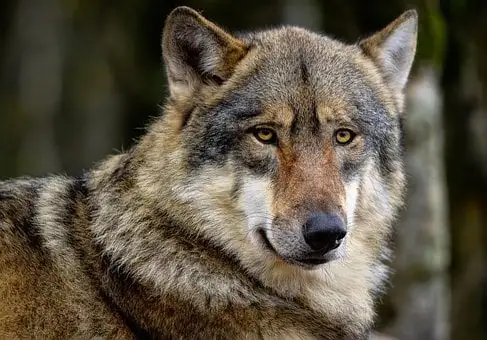Wolves are fascinating creatures, and black wolves, in particular, are known for their striking appearance and elusive nature. Studying wolf behavior and personalities can provide valuable insights into the species and help us better understand the role they play in their ecosystem.
In this article, we will explore the physical characteristics and personality traits of black wolves, how they fit into the social hierarchy of their pack, and their communication methods.
Physical Characteristics of Black Wolves
Black wolves are a subspecies of the gray wolf, known for their black fur. The black coloration of these wolves is due to a genetic mutation that causes a higher concentration of melanin. They have yellow or amber-colored eyes, and their coats may have a silver or gray undercoat.
Black wolves are physically similar to other subspecies of gray wolves, with a strong, muscular build and large paws for running through snow and over rough terrain.
Personality Traits of Black Wolves
Black wolves are known for their intelligence, adaptability, and social nature. They are highly sociable animals, and their behavior is largely determined by their pack’s dynamics. Black wolves are also known to be loyal and affectionate to their mates and offspring.
Their personality traits can differ based on their role within the pack, and their behavior is influenced by various factors, including their age, sex, and rank.
Black Wolf Social Hierarchy
Black wolves, like other wolf subspecies, have a strict social hierarchy within their packs. The pack is led by an alpha male and alpha female, who are typically the strongest and most dominant wolves in the group.
Subordinate wolves are responsible for various tasks within the pack, including hunting, guarding the den, and caring for pups. Black wolves’ position in the social hierarchy is determined by their personality traits, such as their dominance, aggression, and cooperation.
Black Wolf Communication
Wolves use a variety of communication methods to interact with each other, including vocalizations, body language, and scent marking. Vocalizations include howls, growls, and whines, which have different meanings depending on the context.
Body language, such as tail and ear position, is also used to communicate intent and emotion. Scent marking is used to establish territory boundaries and communicate reproductive status.
Black wolf communication is influenced by their personality traits and social position, and it plays a vital role in their pack’s dynamics.
Related: Interesting Facts About Black Wolves
Conclusion
Black wolves are fascinating creatures with unique physical characteristics and personalities. Their social nature and strict hierarchy within their packs make them an intriguing subject for study.
Understanding their personality traits and communication methods can provide valuable insights into their behavior and interactions with other wolves. It is crucial to continue studying black wolves and their behavior to help protect and preserve these magnificent animals and their habitats for future generations.
